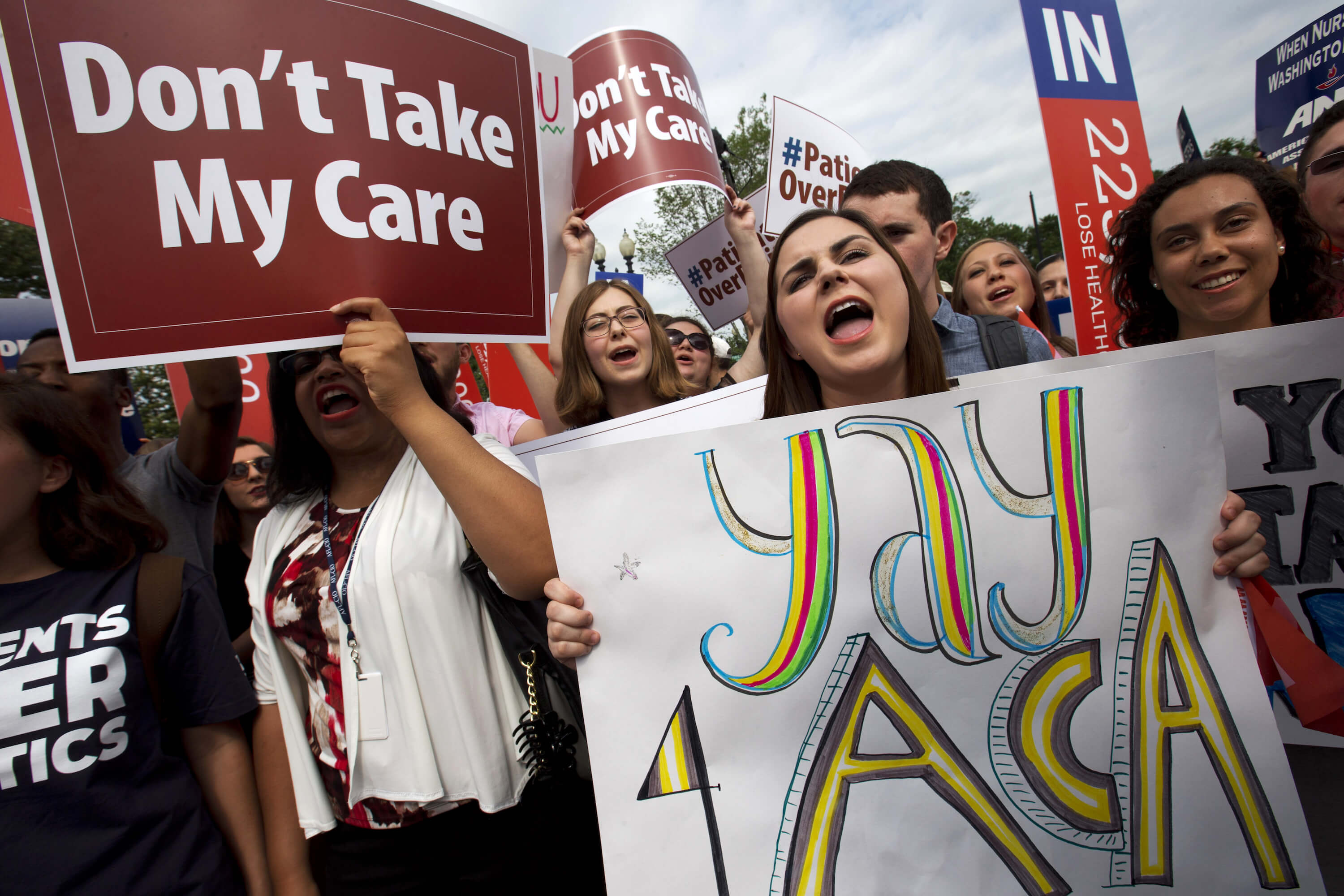Overview

“Equitable Growth in Conversation” is a recurring series where we talk with economists and other academics to help us better understand whether and how economic inequality affects economic growth and stability.
In this installment, Equitable Growth President & CEO Heather Boushey talks with economist Leemore Dafny, the Bruce V. Rauner Professor of Business Administration at the Harvard Business School and the Kennedy School of Government. Her research focuses on competitive interactions between payers and providers of healthcare services, with an emphasis on antitrust, competitive strategy, and public policy. She also studies competition in pharmaceutical markets.
Dafny is a research associate of the National Bureau of Economic Research, a board member of the American Society of Health Economists and the Health Care Cost Institute, and serves on the Panel of Health Advisers to the Congressional Budget Office. She has testified on competition issues before both houses of Congress and served as deputy director for health care and antitrust at the Federal Trade Commission’s Bureau of Economics.
In an in-depth conversation about her research and its implications for public policymaking, Boushey and Dafny discuss what the research says about:
- The health insurance exchanges established under the Affordable Care Act
- Antitrust and competition policy in the health insurance market
- Health insurance mergers, the cost of health insurance, and potential harm to consumers
- Pharmaceutical companies offering coupons to consumers
Boushey and Dafny close their conversation with a closer look at Dafny’s work at the intersection of academia and public policy, specifically:
- What motivates her research into health insurance?
- How does she convey that research to policymakers?
- How did her time working at the Federal Trade Commission influence her research?
- Where should Equitable Growth concentrate its future academic grantgiving?
[Editor’s note: This conversation took place on June 21, 2018.]
Heather Boushey: It is so wonderful to have you here to have a conversation with me. I’m very excited to learn a lot about your work.
Leemore Dafny: Thanks. I’m glad to be here.
Boushey: I’m going to just start off with a general question. Our mission here at Equitable Growth is to advance evidence-backed ideas and policies that promote growth that is strong, stable, and broadly shared. Your research on health insurance markets is credited with being critical to the development of the insurance exchange markets under the Affordable Care Act. Can you walk me back a few years to when you were doing this research, and explain to me how your research affected the design of the exchanges or how you think it should have affected the design of them? And today, based on their performance, do you have thoughts about additional changes that you think could be made?
Dafny: I’m going to take you back as you requested, but probably further than you might have expected. Some 15 years ago, when I was an assistant professor at Northwestern University at the Kellogg School of Management, I started doing some research on private health insurance markets because I encountered a fantastic data source, a proprietary dataset that had information on the health plans offered by a big sample of very large firms, but that sample wasn’t random.
The data was from a very large benefits consultancy. I got to know the consultancy and convinced them of the merits of some research on this sector. This led me to think about what kinds of studies I could design, and I decided that the best way to try to use the data was to assess how well these markets were functioning. How competitive are they? And what is the outcome that I thought was going to be most straightforward to study? I settled on the price of private health insurance. That’s how it all got started.
What I found was a little surprising to my contacts in the industry, who had assured me that health insurance was a very competitive market, that bids were coming in very close to one another, and that there were very thin margins. Instead, I really found evidence that wasn’t consistent with a very competitive marketplace. First of all, I found that firms seeking health insurance for their employees had very few options in the various locations. In some locations, they had a lot, but in a lot of areas where firms had many employees, they really didn’t have very many choices.
And in the areas where they had roughly six or fewer health insurers, I found a strong relationship between what the insurance premium was in a given year and what the profits of this company were in the year before. So, if a firm had a really good year in terms of profits, then it would be up-charged, specifically in the geographic areas where there were a small number of insurance options. That kind of price discrimination is not what we typically expect in a competitive market.
Boushey: So, how did the insurance companies know about firms’ profitability?
Dafny: Good question. In my research, I used data from Compustat, a public financial database, and matched it to my sample of firms. Those with matches were large, publicly held firms. Essentially, it’s not too hard to figure out that United Airlines had gone into bankruptcy, so you might need to cut them a break, while Dell Computer was maybe having a windfall period and they could afford to pay more for their benefits. And, in a highly concentrated industry where you have these long-term relationships, there’s some give and take that enables this sort of dynamic to happen—I think certainly more take than you would see with a competitively supplied market. In this market, it’s like, I go to the store and I buy an apple, and just because my income has risen, I’m going to pay more for that apple.
What the research says about the health insurance exchanges established under the Affordable Care Act
Boushey: How did that research inform your thinking about what kinds of structures should be set up to encourage competition among health insurers, as the federal government did when it implemented the Affordable Care Act?
Dafny: From that research, I could say it’s one study, and there ought to be more studies, and there is still a need for more research in this area. But from that one study, it seemed that even fairly sophisticated buyers who had really high volume are subject to these market forces because in many areas, it’s a concentrated market. And that even having six players in that marketplace did not seem to be quite enough to offset the ability of those insurers to price-discriminate. So, the lesson for the health insurance exchanges is that we need a lot of players in these exchanges in order to get robust competition.
Boushey: Do you think that that has been achieved?
Dafny: The exchanges have fluctuated dramatically over the years in terms of market participation, with some early entrants and then, as everyone is well aware, a lot of legislative uncertainty. And one thing insurers really hate is uncertainty. So, they’ve had to commit to rates long before they really understand the parameters of what the regulators are going to do.
In my view, to answer to the second part of your question based on the performance of the exchanges, I would say we didn’t let the exchanges perform by giving them a clear set of rules and then seeing what the market did. We kept mucking with the rules and also saying we might muck with the rules, which means that I find the actual experience to be of much more limited value than you might think.
What the research says about antitrust and competition policy in the health insurance market
Boushey: Fast-forwarding to just a couple of years ago, in 2015, in two separate events, four of the five largest health insurers proposed merging. Based on your research and testimony that you gave before the Senate Antitrust Subcommittee, you raised concerns about these mergers. And evidently, apparently, the Antitrust Division of the U.S. Department of Justice shared many of those same concerns, as they successfully challenged them in court. Can you tell me a little bit more about what the research shows about the dangers of consolidation among insurance providers and what effect anticompetitive consolidation has on employers, patients, and the quality of healthcare?
Dafny: That’s a big question. Let me talk about the study that I’ve done that’s most on point here and that is actually the next big study I did with the data source I described to you—a large sample of the health plan offerings of many large employers in the United States, covering about 10 million active employees. What I and my co-authors, Mark Duggan at Stanford University and Subramaniam Ramanarayanan at the University of California, Los Angeles, did was study the effects of a large national merger that had different impacts in different local markets because of the differences in the premerger market shares of these insurers.
We studied the effects of this merger on premiums of both the merging parties and their rivals. In an oligopolistic industry, if markets become more concentrated, then you would expect not just the merging parties, but also their rivals, to be able to raise prices. And indeed, we found that was the case in areas where the merging insurers had greatest overlap and divestitures weren’t required by the Department of Justice.
There is one other paper from the American Medical Association that I’m aware of that has used a merger to look at the effects on premiums. The paper looked at the effects of a regional merger on small group premiums. They also found significant premium increases in geographic areas where the merging parties had greater market share. So, I shared with the Senate Antitrust Subcommittee what I found from my study and also some evidence from other studies that also find harm to consumers following greater insurance market consolidation.
Boushey: Prices rose. Did you or did this other study also find effects on patient outcomes? Is there any connection there as well?
Dafny: Well, we absolutely care about patient outcomes. The problem is that getting underlying data—and on a massive national scale and over a certain time period—on prices is hard, and even harder to do on patient outcomes. Such a study is not inconceivable, but it has not been done.
I think at some point you’re going to ask me what research should done. And trying to look at the quality and not just the price effect of consolidation is one area for future research. More of that has been done for hospital mergers than for health insurance consolidation.
Boushey: I can imagine it would be difficult to find data that connects the dots between all these different outcomes, but so much more is now being tracked over time. We’re getting more access to these bigger datasets. I wonder if, in the future, we’ll have more and better access to that kind of data.
What the research says about health insurance mergers, the cost of health insurance, and potential harm to consumers
Boushey: Merging health insurance companies often argue that they would be able to negotiate lower rates from healthcare providers such as doctors, nurses, and hospitals and that some patients would see lower prices because the insurance companies pass those savings on to the consumers of the insurance. Can you talk a little bit about what you know about whether health insurers have that ability to negotiate lower rates and what that means for consumers? This also takes us back to the quality issue, whether if we pay doctors more or less, you get better or inferior quality care, which obviously may or may not be correlated.
Dafny: Well, you know what? I’m actually going to jump into that! Rephrasing your question: How can it possibly be a bad thing for consumers if insurers use some of their bargaining power to bring down the prices of the inputs into the health insurance product? The answer to that question is that it depends on how they are bringing down those prices. Suppose the insurers did nothing to change the cost of providers, and the providers have comfortable profit margins, and all the insurers are doing is saying, “You don’t get to have those profit margins anymore because we’re going to transfer them to us and hopefully to consumers, potentially to consumers.”
This raises the question of what’s called a “pass through.” From an antitrust enforcement perspective, savings passed through would be considered a benefit to consumers, assuming providers don’t change their behavior. Economists would call it a “rent transfer,” since no change in surplus is occurring. It’s just a change in the division of existing surplus. But now, suppose something different—suppose that the only way the insurers get lower prices is not by taking away the margin, holding quantity constant, but by exercising their market power vis-à-vis these healthcare providers such as purchasing less, as well as paying less.
Certain physician markets are very fragmented, and the insurers name their price—and now that there are fewer insurers, they can name a lower price. Well, the insurers name a lower price, but then they have fewer physicians who are willing to work at that price and/or they provide something less, such as shorter appointment times, less nurse staffing to cover calls, and so forth. Lower prices in this setting can have an impact on the quantity and/or the quality of services, and that’s called monopsony, and it’s the flipside of monopoly. And just as monopoly benefits the seller of a good, monopsony benefits the buyer, in this case, the insurer, but at the expense not only of the healthcare providers but also of consumers in general.
Boushey: So, it really does depend, of course, where some of those rents are and whether or not doctors are overcharging.
Dafny: Exactly. And just one point on empirical evidence. The study that I mentioned to you where my co-authors and I looked not just at the effects of a large national merger but also at the implications across hundreds of different local markets also looked for evidence of monopsony and found it in areas where the insurance industry became more concentrated after the merger. We found decreases in the employment of physicians and a relative increase in nurses’ wages, which would be consistent with insurers using market power to reduce the utilization of doctors and substitute nurses for them, which is potentially harmful to consumers. I say potentially because you can imagine we really want to know patient outcomes.
What the research says about pharmaceutical companies offering coupons to consumers
Boushey: That’s so interesting. Moving away from health insurance for a minute to a different healthcare topic, you did some recent work on the practice in which pharmaceutical companies offer coupons that insulate consumers from cost-sharing. I thought that this was a very interesting idea, that these companies are offering these coupons but your research found something really a little counterintuitive. Can you tell me what you found?
Dafny: Sure. Actually, the title of the study, “When Discounts Raise Costs,” gives it away! We studied the effects of co-pay coupons on generic drug utilization. And it actually can be counterintuitive because a co-pay coupon is when a manufacturer enables you, the patient, to walk up to the drugstore and when they ask you for your co-pay, you present the coupon, and now the price is something lower.
The coupon helps you with cost-sharing associated with private health insurance, but that may not mean that it helps us in general with our pharmaceutical spending because when you don’t care how much it costs, then that enables the pharmaceutical companies to charge a higher price because you’re not sensitive to it anymore. So, the buck stops somewhere or rather the buck has to be paid by someone, right? That buck comes out of your insurer, which gets passed through down to you.
A coupon might be at the very moment in time beneficial to any individual patient, but in the long run, it’s very likely to be driving higher prices and spending. What our study did was it took advantage of what economists call a natural experiment, which is the fact that the commonwealth of Massachusetts passed a ban of a certain kind of co-pay coupon and we had some detailed claims data from Massachusetts, as well as a neighboring state, New Hampshire, that did not have such a ban. So, we were able to look at what happened to the utilization of drugs in a state with the ban versus without and across different populations. And what we found is that if it’s a coupon for a branded drug for which there’s also bio-equivalent generic available, that coupon tends to increase the branded sales of the drug by 60 percent.
Boushey: Wow.
Dafny: And total utilization of the drug doesn’t change. So, it’s not that more people are taking drugs they should be taking. They’re just buying more expensive drugs because they’re insulated from the cost of paying for the brand.
Boushey: That’s a real smart strategy on the part of that brand, it sounds like, to use these coupons. It seems in some ways your research is unveiling what some of these firms are doing. I wonder how often the evidence that you provide actually shows them which strategies work and which strategies don’t.
Dafny: Well, I’m not trying to give them any pointers, although I do teach in a business school classroom, and incentives are present and I expect firms to react to them. And part of the reason I do what I do is that I want to try to design incentives such that firms, when maximizing profits, also maximize or come closer to maximizing consumer welfare.
But you’re right. A lot of my work is about unveiling competitive practices or anticompetitive practices so that we can optimally design policies. One of the effects of that research, I believe, is that California passed a similar ban on those kinds of coupons just last fall. My co-authors spoke to the folks who were writing that bill, and I hope others will listen to this and that federal legislative bodies will take it up.
What motivates your research into health insurance? And how do you convey that research to policymakers?
Boushey: Let me segue into the question about how you do your own research, and in particular, how you got into questions around health insurance. You started off this conversation by telling the story about how you’ve found this great dataset that allowed you to study the effects of consolidation in the health insurance industry. As someone who’s focused on the intersection between research and public policy, how do you in your work adjudicate between what it is that you know or you think you know and what policymakers know or need to know? How can you answer these different kinds of questions with the data available? How do you think about that?
Dafny: You’ve put your finger right at this intersection where it becomes uncomfortable to be an academic who cares about policy. As an academic, I’m, of course, really wedded to having robust research results to back up any policy that I might advocate. And yet, to generate those robust research results typically takes data that is difficult to obtain or possibly won’t be shared with us and takes more time than policymakers often have. It is a challenge threading this needle.
What I tend to do is either extreme. Either I’m going to spend years trying to document something in a very painstaking peer-reviewed way and try to publish it in a leading journal. Or I will write a framing blog post or opinion piece, a perspective piece laying out reactions and arguments to consider, without possibly claiming to be able to make any definitive statements about the answers in that case.
Boushey: One of the things that Equitable Growth finds as we work with scholars from across the country is that so many people have such large bodies of knowledge about whatever field they’re in, but it’s hard sometimes to find that right balance, as you just said, between giving policymakers advice on something that you know for certain to be true versus an important and pressing policy question where the answers may be a little less clear. Policymakers actually need to know what’s your best advice because you have to move forward in the real world. But finding that balance of having the evidence to the extent possible is such a challenge.
How did your time at the Federal Trade Commission influence your research?
Boushey: I understand that you served for a couple of years as a deputy director for healthcare and antitrust in the Federal Trade Commission’s Bureau of Economics, which, of course, is different from your work as an academic. How did that experience affect how you think about this intersection between the policy work and your research? Are there any stories or anything that you learned in that time period? It must have been a very interesting time to be there just after the Affordable Care Act.
Dafny: I did work at the FTC, but unfortunately it was just shy of a year. It was difficult to take my family out of Chicago and relocate, but it was really a fantastic experience. I feel very fortunate to have spent time there and was really fortunate to be so welcomed by the members of the agency, all of the staff, as well as the commissioners themselves, because we were in this time, and we’re still there, with a lot of healthcare consolidation and a lot of interest in antitrust enforcement and the need to inspect closely, investigate potential transactions and some consummated transactions.
So, it was a time when the activity and my participation was welcomed, and I was really appreciative of that. Certainly, I walked away with a great deal of insight into how antitrust enforcement is done. I also walked away with an ability to better try to match the research that I’m doing, as well as the research that others that I advise do, to what the enforcement needs are.
I used to complain, before I worked at the FTC, about how markets weren’t more competitive and the FTC should do something about it. Now, I have a much more nuanced view and appreciate much more that while they are advocates for competition, their real focus is enforcing the law and the law is somewhat narrow or at least has a fairly narrow interpretation. So, I learned a lot about the strength of the agency, about what it can do and about what it cannot do.
You asked what surprised me. I had a couple of surprises. One maybe wasn’t a surprise so much as another positive experience of seeing how devoted the staffers are to the mission of the agency and how professional and courteous and hardworking they are. Public servants are really what these folks are. So, I was very impressed by that.
What surprised me a little bit was that we economists were not the main act. I thought, “This is all about competition, so of course the economists are front and center.” We were definitely on the stage, but I would say that the attorneys have a lot of involvement in the framing of cases and unearthing obviously the important documents. They play a huge, huge role. I would certainly not count economists out, especially in court, where we’re pretty significant, but I didn’t know that going in.
I also didn’t know how much firms could get away with in terms of their delaying tactics when it comes to conduct cases. I didn’t know how infrequent it was that the agency sought disgorgement of ill-gotten gains. They’ve now, actually, since I left started to do more of that, but the ability to engage in what I think of as some pretty straightforward anticompetitive practices and not have the federal government really have a significant punitive action kind of surprised me.
Boushey: Those are great stories. I’ve been here in Washington for 18 years now, and I think that I feel like one of the things that took me a while to learn was that economic policy is done to a large degree by lawyers. Some of my favorite “economists” are actually lawyers. They’re making laws or they’re interpreting the laws. It’s a different kind of detailed work.
Where should Equitable Growth concentrate its future academic grantgiving?
Boushey: I have one last question for you. Equitable Growth has an open and competitive grants program through which we fund economic research. And we have a call, a Request for Proposals that goes out each fall. As we are thinking about our future grantmaking, I wanted to ask you if you could weigh in on what you think some of the biggest, most important research questions are, where you think we should focus our attention, or where you think more of a light needs to be shined on particular parts of this field.
Dafny: Well, I’m obviously going to pick areas close to my heart. So, the first is going to be competition in insurance markets. We continue to rely heavily on private insurers, not just because they administer and sell commercial insurance, but also because public insurance programs increasingly rely on private insurers to deliver benefits to enrollees. I just don’t think that policymakers have figured out how to get more effective competition in that sector. And I, in particular, think policymakers ought to look more closely at private exchanges and potentially shift away from employer-sponsored insurance into private exchanges because that just might make some of the markets thrive. So, that scenario is ripe for research.
And the second area I would say is the sustainability of our pharmaceutical pricing model, particularly with precision medicine coming our way and some of the price tags that we are expecting, and frankly, the really high cost of delivering those therapies. It seems to me that there’s been a great deal of investment by companies, large and small, in anticipation that nothing is going to change in our pricing model. I suspect that it’s pretty unsustainable. So, trying to figure out what we ought to do about it before there’s a big crash and before some very sick people maybe don’t get medicines designed to help them seems like a good idea.
Boushey: Well, those are very important areas to explore, and I’m glad that you put them on the table. We have not looked a lot at healthcare, although we’re looking a lot at concentration, and I’m very excited to both talk to you today and to get more information about one of the most important issues for America’s working families. Thank you for your research. Thank you for your time. This has been a real treat.
Dafny: A real pleasure, Heather, very nice to meet you.
Related
Killer Acquisitions
Explore the Equitable Growth network of experts around the country and get answers to today's most pressing questions!






